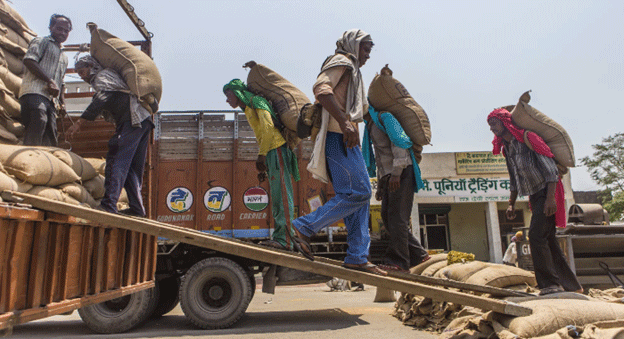India, the world’s largest rice exporter, has recently relaxed export restrictions on certain rice varieties, signaling a possible shift in agricultural policy following national elections. This decision aims to alleviate rising global prices and indicates a strategic approach to managing surplus stocks.
The Indian government has lifted the ban on white rice exports, excluding basmati, while establishing a minimum selling price of $490 per ton. Additionally, the export tax on parboiled rice has been reduced from 20% to 10%. These changes come after the government imposed restrictions in 2022 to combat domestic inflation and ensure food security, leading to a surge in Asian rice prices to their highest levels since 2008. This move prompted key importing countries to seek suppliers elsewhere, as rice remains a staple food for billions globally.
Context of the Export Restrictions
In 2022, India implemented export restrictions to stabilize domestic prices amid rising inflation, but recent data from the U.S. Department of Agriculture indicated record-high rice stocks in the country. According to the Ministry of Commerce, rice exports plummeted by 25%, totaling 5.26 million tons in the first four months of the fiscal year beginning April 1. The easing of restrictions is expected to reduce surplus and lower import costs for countries like Indonesia and Senegal.
Indian farmers have begun harvesting the rice planted during the monsoon season, benefiting from favorable rainfall this year, which has led to increased planting compared to the previous year. The government’s recent notification also imposed a 10% export duty on unmilled rice, while white rice remains exempt.
Implications for the Global Rice Market
The easing of export restrictions is poised to have significant implications for the global rice market. The influx of Indian rice may help stabilize prices, especially for countries reliant on imports. As many nations face rising food costs, Indian rice can provide a vital buffer against inflationary pressures. Furthermore, the reduction in export duties is likely to encourage other exporting countries to follow suit, fostering greater competition in global rice markets.
India’s decision comes at a critical time as several regions worldwide continue to grapple with food security challenges exacerbated by climate change and geopolitical tensions. The resumption of rice exports could help alleviate some of these pressures, particularly for developing nations heavily dependent on rice as a staple food.
India’s recent move to relax rice export restrictions not only reflects a shift in its agricultural policy but also signals potential relief for the global rice market. With favorable harvest conditions and significant stock levels, Indian rice exports can play a crucial role in stabilizing food prices worldwide. Farmers, agronomists, and agricultural stakeholders must remain vigilant and responsive to these developments as they navigate the evolving landscape of global agriculture.
Error




